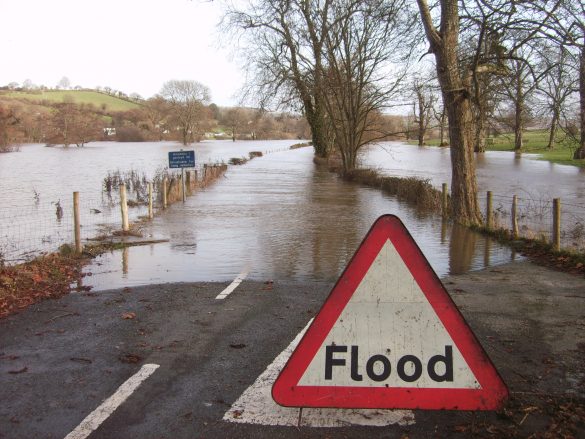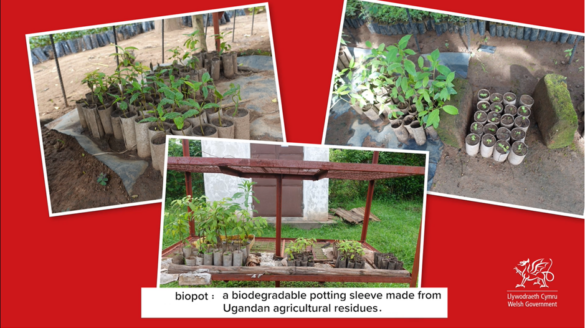Working with at-risk communities across Wales to raise awareness of flooding impacts and improve resilience
Wales is a country that is part of the United Kingdom and the island of Great Britain. With an essentially maritime climate, Wales is wetter and windier than other parts of the UK, and the winter months are particularly wet. Bordering the Irish Sea, Wales is also susceptible to coastal flooding – indeed coastal flooding is likely to become just as damaging as river flooding in Wales over the coming years. It is important to understand the risk of flooding caused by climatic changes in Wales in order to improve resilience and prevent the worst impacts. Flooding poses a threat to all aspects of Welsh life, from agriculture and infrastructure to residential and business properties. One in 6 properties in Wales are at risk of flooding. Flooding was directly responsible for approximately 340,000 passenger delay minutes on the British rail network between 2006 and 2013 (5% of all delays). Access to services, education and employment are all impacted upon. Flash flooding is also a threat to life.
To help improve public understanding of the risks associated with flooding in 2010 Environment Agency Wales set up a project called ‘Flood Awareness Wales’. The project aimed to ensure that communities at risk of flooding appreciate that floods cannot be prevented, but the impacts can be minimised. The project focused on helping people know how to prepare for, and respond during, a flood incident. Since 2013, Flood Awareness Wales has been run by Natural Resources Wales and continues to promote community flood resilience.
Working with individuals, businesses, schools, farms and entire communities, Flood Awareness Wales was a measure designed to highlight that with a changing climate with the risk of erratic weather and more flooding increasing, flood defences alone are no longer a sufficient response.
Initiatives to raise awareness of the importance of being prepared for flooding have included a roadshow all over Wales with a giant pair of welly boots to talk to people about flood risk. Dedicated teams of flood awareness officers visit people in their homes and at community meetings in flood adverse areas to discuss planning for a flood. Residents are encouraged to sign up for free flood warnings, to prepare homes and businesses for floods and to prepare a flood kit of essential items.
Worksheets were provided which highlighted key areas to be considered in the event of a flood. These included questions about the possible sources of flooding and the dangers associated with different types of flood. Information about the ways to reduce the impact of flooding to your home was offered, alongside recommendations of important things to include in a flood kit (home insurance documents, torch, waterproof clothing, etc.).
Flood awareness officers also work with community representatives, to devise community flood plans, which can then be tested and practiced before flood events to ensure it meets the needs of the community. The plans outline the actions that a community will take during a flood. Whilst flood awareness officers give input, ownership of the plans is with the community. Individuals within the community can become flood plan leads – volunteers who help communicate the plans to the community and are responsible for putting the plan into practice. Flood awareness Wales also works with schools at risk of flooding to develop school flood plans and to educate pupils about flood risk.
Between 2010 and 2012, Flood Awareness Wales officers visited over 71,000 properties in 168 at risk communities to raise awareness of flooding. Almost 30,000 residents and business owners were directly engaged and more than 300 community flood plans were created. 40% of them were tested in this timeframe. Over 6,500 individuals signed up to receive flood warnings following the initial community engagement and awareness raising.
Natural Resources Wales did a review of coastal storms in 2014 that highlighted efforts were needed to improve the resilience of coastal communities to future flooding. In 2015, a delivery plan was produced which outlined how the recommendations on coastal flooding would be progressed.
In December 2015, Natural Resources Wales commissioned an independent review of Flood Awareness Wales. This study found that the targeted approach, which used flexible methods to suit each community, was effective engagement. Partners and volunteers found the programme to be successful and the support (templates for plans, expertise and guidance) useful.
The current approach of Natural Resources Wales to develop community flood plans is perceived as resource intensive, due to the time required to understand communities, identify barriers to engagement and communicate effectively. It was also suggested that empowering flood volunteers is more effective that focusing solely on flood plans. Where active flood groups are established in communities, there is less reliance on Natural Resources Wales for support.
The vast majority (over 90%) of the flood plan volunteers surveyed in the independent review were confident that flood plans would continue to be implemented in communities. A lack of funding and resources were identified as potential threats to the future plan implementation. But the introduction of landmark legislation, such as the Wellbeing of Future Generations (Wales) Act 2015 and the new Environment (Wales) Act 2016 were highlighted as opportunities to better promote flood risk awareness and resilience measures.






